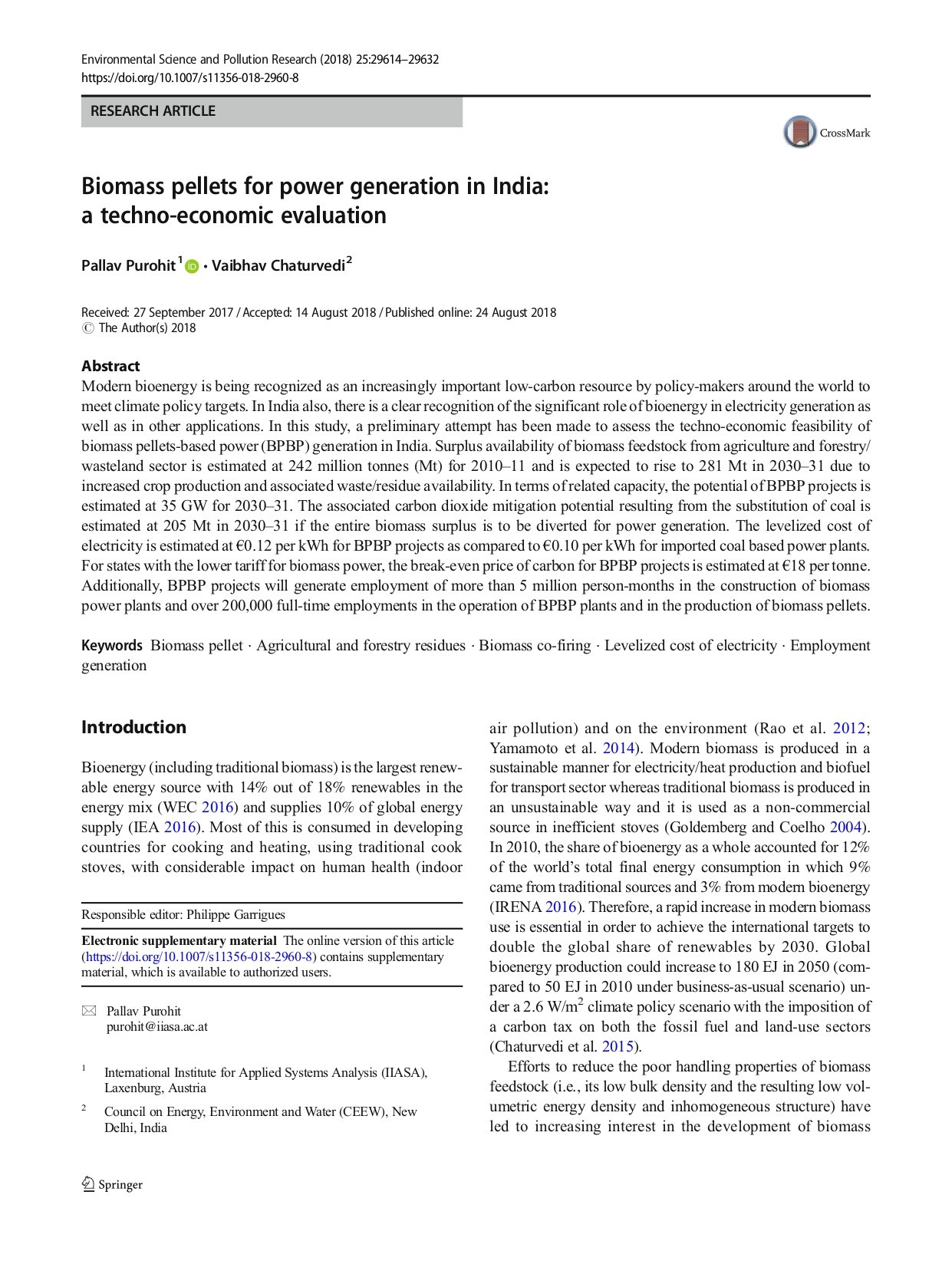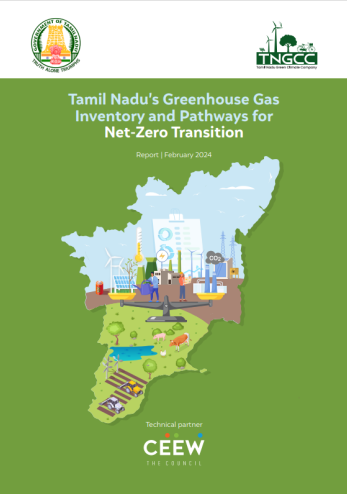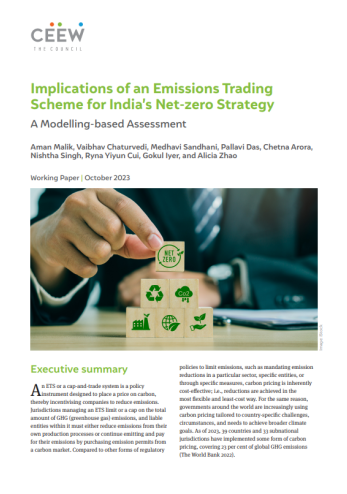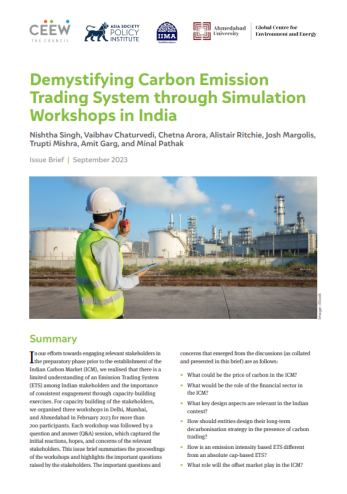Paper
Biomass Pellets for Power Generation in India
A Techno-economic Evaluation
Pallav Purohit & Vaibhav Chaturvedi
August 2018 | Low-carbon Economy
Suggested citation: Purohit, Pallav, and Vaibhav Chaturvedi. 2018. "Biomass pellets for power generation in India: a techno-economic evaluation." Environmental Science and Pollution Research 25, no. 29: 29614-29632.
Overview
This study is a preliminary attempt to assess the techno-economic feasibility of biomass pellets for electricity generation in India. First, it estimates the state-wise availability of agricultural and forestry residues for the production of biomass pellets. It then examines the production cost of biomass pellets and the cost of electricity production from biomass pellet-based power (BPBP) projects. Further, the paper discusses the potential for employment generation in the BPBP production value chain and implications of the climate policy and the international biomass pellet market.
Annual biomass pellet production through biomass surplus and associated electricity generation
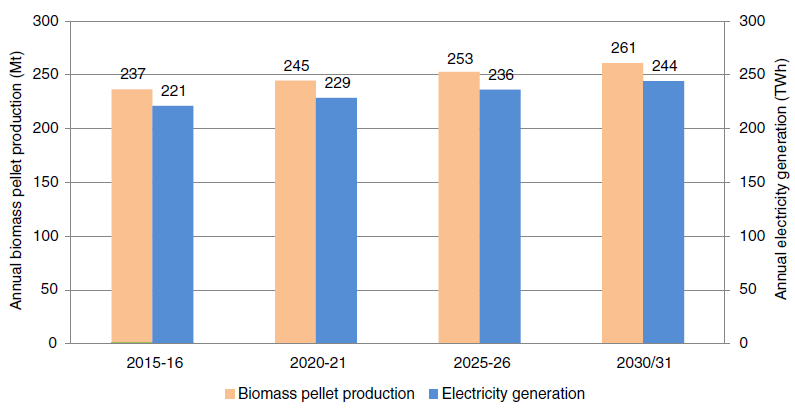
Key Highlights
- The surplus biomass availability from the agricultural sector (123 Mt in 2010–11) alone was sufficient to substitute 25 per cent of current coal consumption in the power sector (through the co-firing of coal with biomass pellets).
- The annual electricity generation potential from biomass pellets is estimated to be 244 TWh in 2030/31 out of a total 4,000 TWh of electricity production in India in 2030/31.
- Pelletised biomass can potentially produce six per cent of India’s total electricity in 2030/31, in addition to direct biomass co-firing for electricity production.
- Based on detailed assumptions concerning input cost and technical factors, the cost of a biomass pellet would be €64 per tonne. The levelised cost of electricity would be €0.12 per kWh, which is even higher than the cost of imported coal-based electricity.
- The financial viability of biomass pellet-based electricity generation depends on the surplus availability of biomass feedstock, the price of biomass, the transportation distance from the farm to the BPBP project, and the cooling technology, which together determine the tariff provided by Central Electricity Regulatory Commission (CERC).
- A carbon price could play an important role in increasing the penetration of biomass pellets in India’s electricity generation if the tariff is at the lower end of the range as determined by CERC.
- For states with lower tariff for biomass power, the break-even price of carbon for BPBP projects is estimated at €18 /tCO2.
- For 2030/31, it is expected that the biomass pellet industry will create over 260,000 full-time employments in rural areas.
- Additional employment will be generated during the construction of biomass power plants. About 87,500 full-time employments in the operation of biomass power plants for 2030/31.
- If Indian energy systems also need to shift towards bioenergy in a big way, India would have to become an importer of bioenergy.
- Therefore, it is important to invest in developing domestic bioenergy resources as much as possible to minimise potential imports and move India towards a low-carbon economy.
Pelletised biomass can potentially produce 6 per cent of India’s total electricity in 2030/31, in addition to direct biomass co-firing for electricity production.




